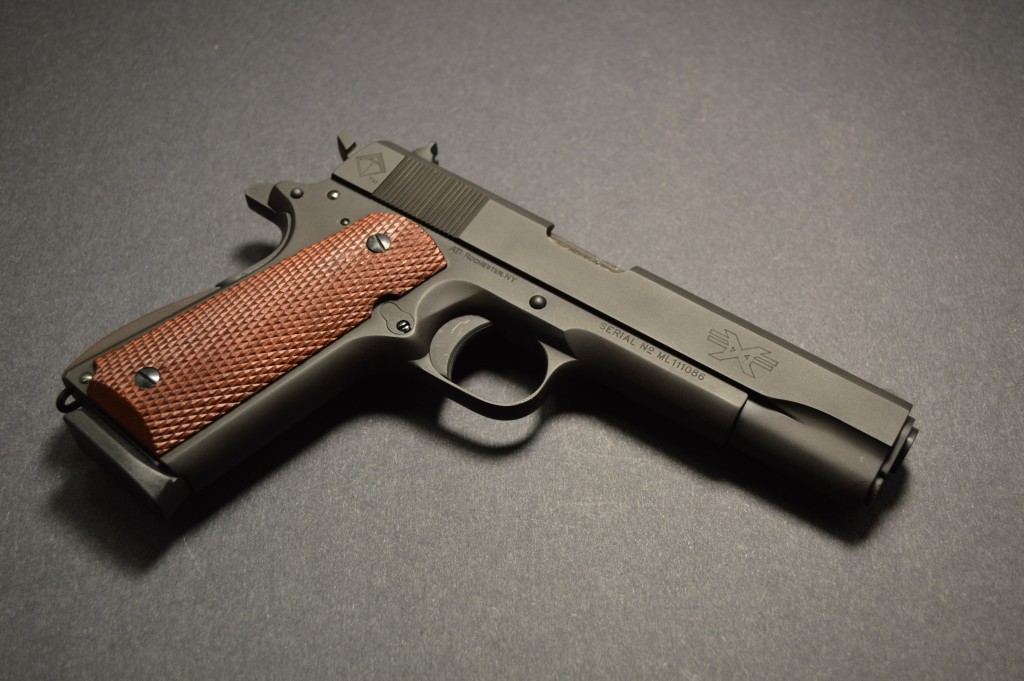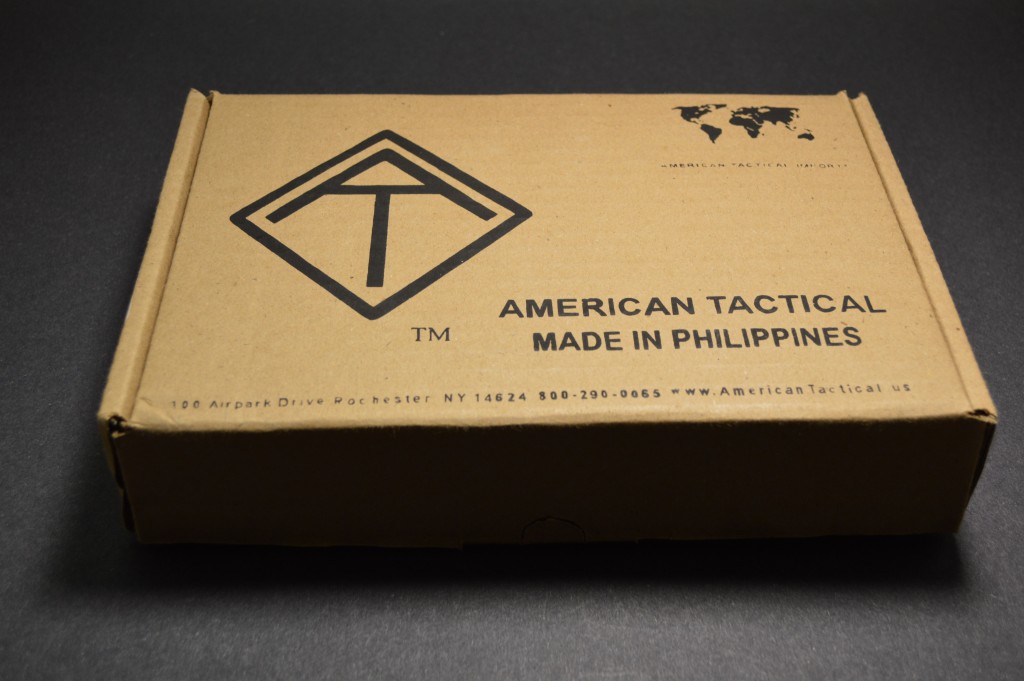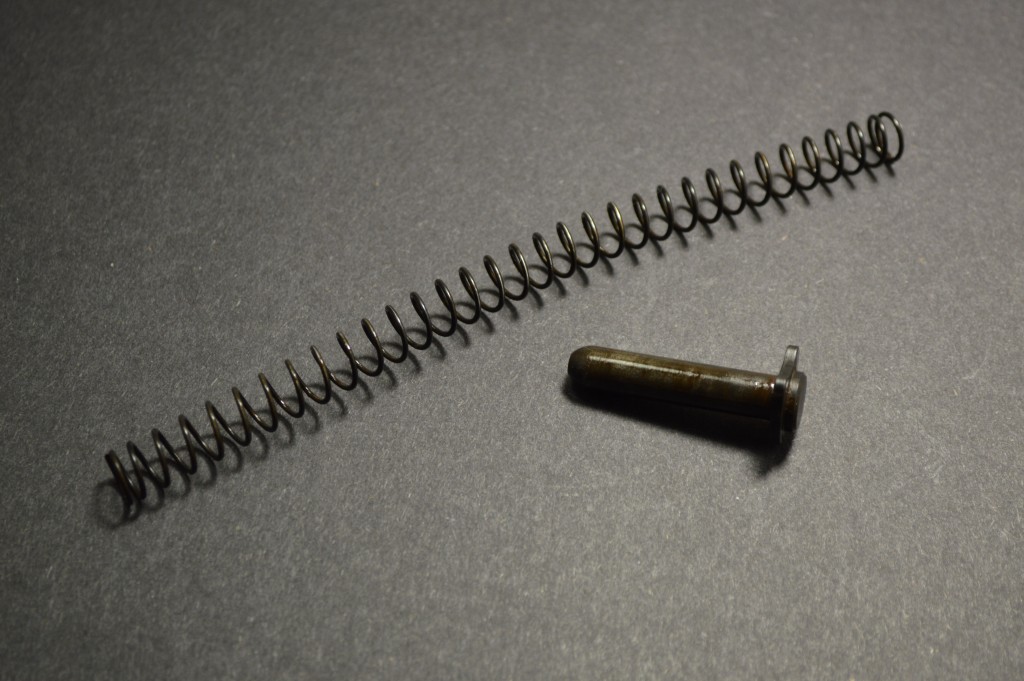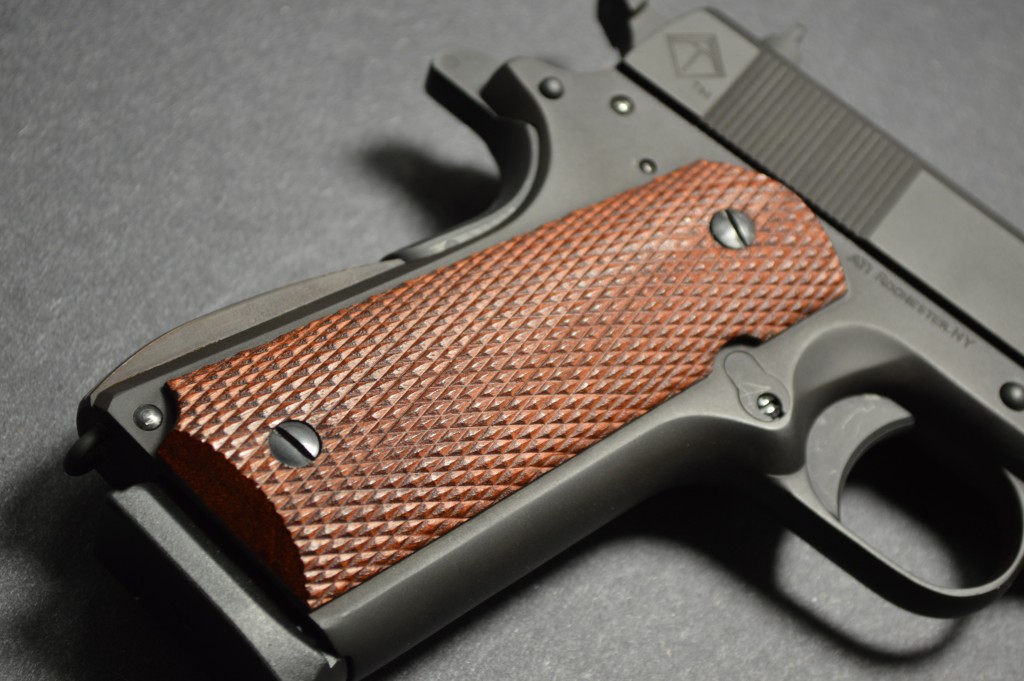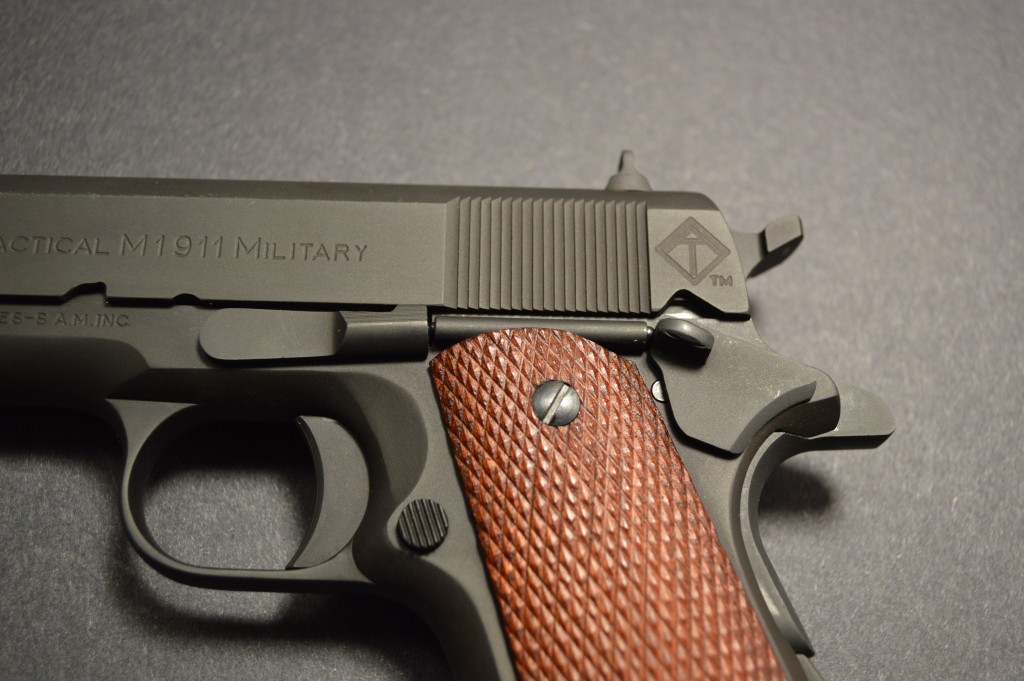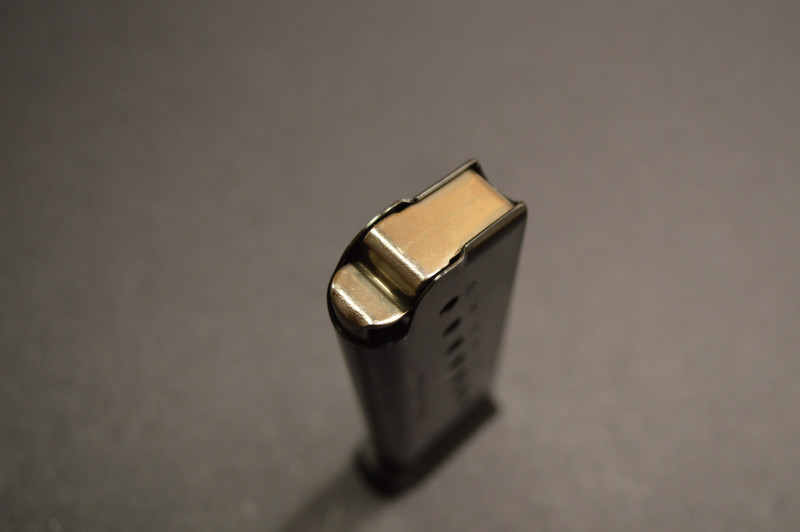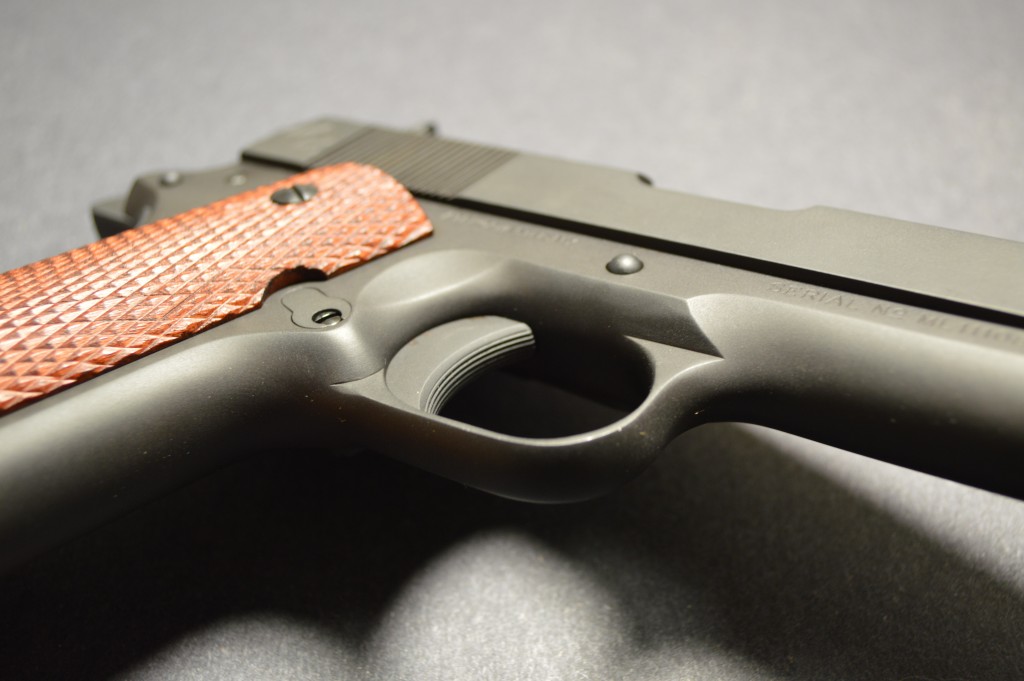ATI FX Military 1911 Review
The 1911 has always held an important place in my heart. In addition to being the most attractive military sidearm to ever see mass issue, my grandfather also carried the 1911 during his service with the Navy in the Pacific Theater of World War Two. As a relatively small guy, my grandfather has frequently recalled his dislike for the grip safety of his issued 1911 and on at least two occasions has stated that he would have been better off throwing the pistol at the Japanese. Collectors should note that he loved his M1 Carbine, a fondness I wholeheartedly share.
Unfortunately, as a result of a sticky-fingered fellow shipmate, my grandfather was unable to bring his issued pistol home as had originally been planned. Because of this, I have always felt as if there was a void in my collection that could only be filled with a WWII-era .45 ACP 1911A1. Often selling for over $1,500, an original example has never really been practical for me and would certainly not be a “shooter” so to speak. Instead, I have always kept an eye out for affordable 1911s with the hope that one might come my way at the right time. Much to my amazement, Grabagun recently lowered the price on their Firepower Xtreme 1911s distributed by American Tactical Imports. Since ATI has also been running a $30 rebate on FX 1911s, my total cost for the pistol came out to $299 plus $15 for the transfer through Alpha-Star Tactical in Columbus, Ohio.
Overview
John Moses Browning’s 1911 is without a doubt the most timeless semi-automatic handgun ever to be conceived. The summation of Browning’s previous work in handgun development during the late 1890s and early 1900s, the 1911 was revolutionary both in terms of operation and power for a sidearm. After Colt’s submission proved reliable in 1910 testing, the US Army adopted the pistol in April of 1911, thus dubbing it the Model of 1911, or M1911 for short.
Following World War Two, Filipino forces took possession of several thousand US-produced examples and adopted the handgun as the standard military sidearm. As a result of the 1911’s wide adoption and incredible popularity among Filipino forces and civilian shooters, several companies in the Philippines have made a living off producing faithful copies of the classic American pistol. One such company is Shooters Arms Manufacturing in Quezon City. Respected for closely adhering to original specifications, SAM produces a wide variety of 1911s geared towards all sorts of shooters. While SAM has sold 1911s in the United States under their name for several years, ATI has recently (past 2-3 years) started distributing SAM 1911s under the Firepower Xtreme, or FX, brand. My example is one such model. Dubbed the ATI FX Military 1911 it represents a near exact clone of the classic 5” barreled government 1911A1.
Build and Features
Disassembly of the FX is like any other 1911, so I will spare readers the walkthrough. Compared to newer designs, the 1911 can be a somewhat of a bear to take down. The barrel, slide, and frame are all constructed of standard 4140 chrome-moly steel. Beyond the materials, the frame is cast while the slide is a forged part. Unlike many pistols on the market today, the barrel is not chrome lined. Given the fact that .45 ACP is neither corrosive, nor a high pressure round, I am comfortable that the barrel will still last a very long time. Oddly enough, while the bulk of the barrel is blued, the chamber area has been roughly polished to appear “in the white”.
Operationally, the 1911 is a classic. The ATI FX is certainly not a departure from John Browning’s timeless cam action design. In order to unlock the chamber and retrieve the next round, the chamber end of the barrel tilts downward forcing the muzzle end to tilt upwards. As with most handguns, suppressor users will need a Nielsen device or piston for the 1911. Lock-up while in battery is excellent. While the tolerances may not be match-grade tight on these handguns, they certainly are not sloppily built.
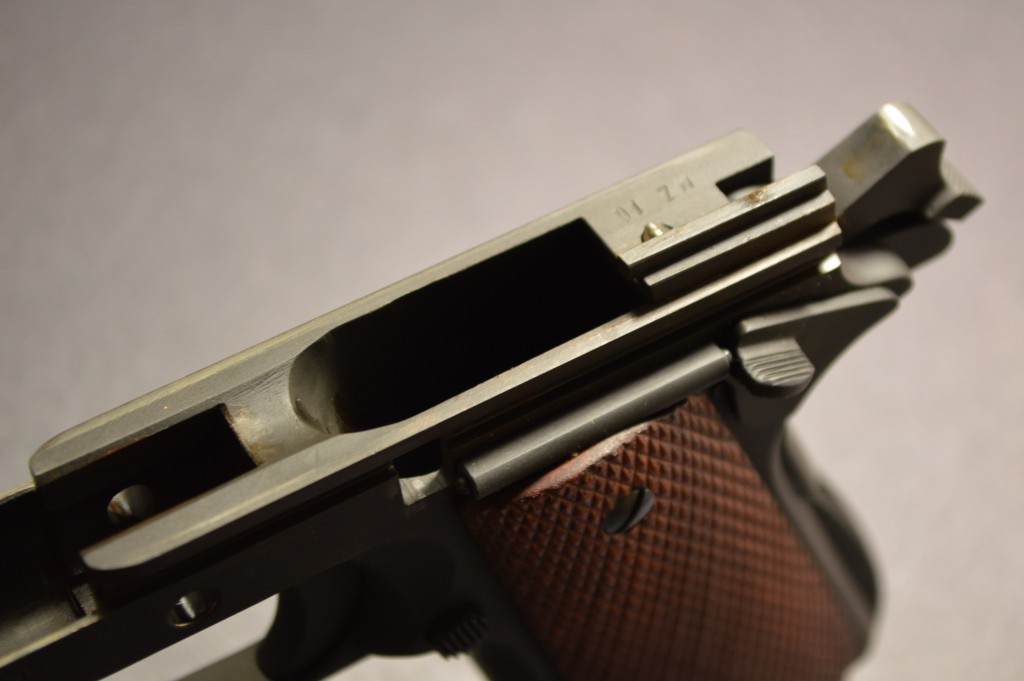
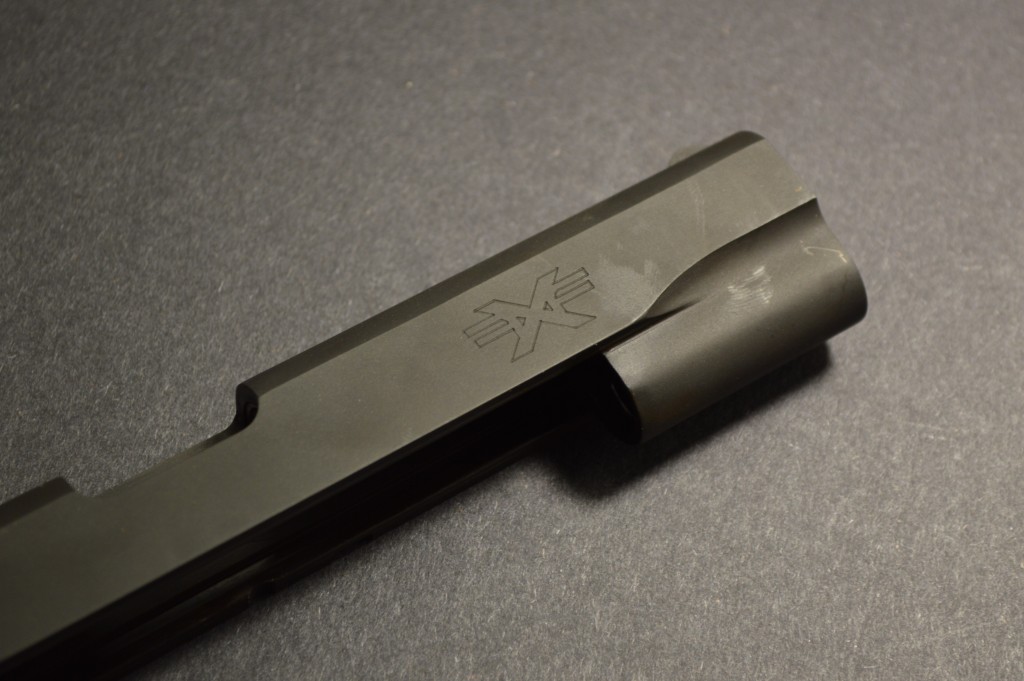
As is the case with many standard 1911s, the FX 1911 uses a half-length steel guide rod for the recoil spring. Most new designs use full-length, or better yet, captive recoil springs that make reassembly of the handgun much easier. Another challenge with the 1911 guide rod is that it must not be pressed back all the way into the frame for installation. When reassembling the handgun, users must take care to only half install the guide rod so as to avoid blocking the hole for the slide release lever.
The trigger on the FX 1911 is a standard medium length 1911 trigger. This means the length of pull is slightly longer than a government 1911A1 and slightly shorter than most government 1911s. The pull and reset are both very short at around 1 to 2mm each and the pull weight hovers in the 5 pound area. Internally, the pistol makes use of the older “Series 70” style layout as made famous by Colt 1911s. Many newer models of 1911 have an added firing pin safety that first appeared in Colt’s Series 80 handguns. Series 80 pistols are reportedly less likely to accidentally discharge if dropped, but Series 70 1911 often have better triggers out of the box due to fewer moving parts.
A good, but opinionated, video on the Series 70 vs. Series 80 topic can be found here.
Finish and Controls
From a finish perspective, the FX 1911 is actually fairly impressive. The parkerization that covers all metal surfaces, save the barrel, is very evenly done and is a very dark gray in color. I did see some wear around the ejection port after my first range session. However, these were rub marks on the parkerizing itself and did not result in the exposure of bare steel. Since this is an inexpensive 1911, the finish is not as wear resistant as that found on other firearms in my collection, but it is more than acceptable for a gun that will see frequent use.
Underneath the finish, SAM stamped both the slide and frame with numerous trademarks. This stamping comes off as a bit excessive, but the markings are attractive and are far more subdued than the billboards Rock Island were putting on their 1911s a few years ago. The slide also possesses standard vertical serrations at the rear to aid in charging the firearm. Make no mistake, this gun is not going to win any beauty pageants, but the finish and features work well enough to make for a nice package overall.
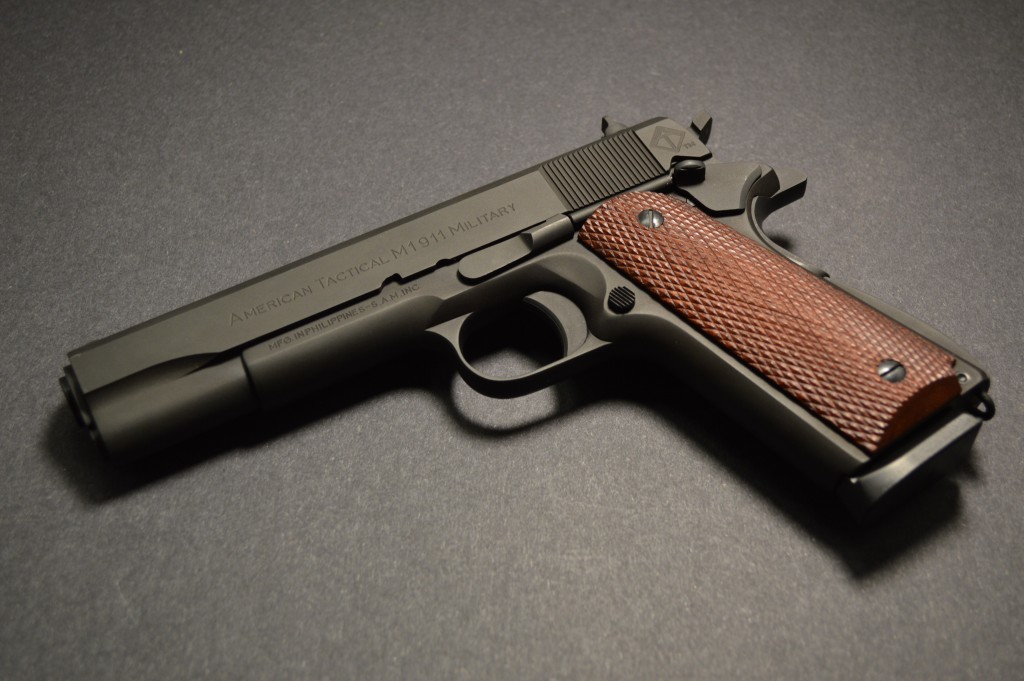

The grip panels on the ATI FX 1911 are made of mahogany and have been checkered in a manner similar to the grips on WWII issued 1911s (WWII models used plastic grips). While mahogany is generally held in high regard for its beauty, the grips on the ATI gun are rather bland. Even so, they are functional and look far better than the smooth ones found on Rock Island pistols.
The manual (thumb) safety on the ATI FX 1911 has similar contour to what is typically present on issued examples. This means that the lever has a simple, small tab that can be engaged using the right thumb. When activated by rotating it clockwise and up, the manual safety positively clicks and the story remains the same for deactivation. The manual safety on 1911s completely locks the trigger and slide, but can only be activated when the firearm is in battery.
The grip safety on the FX is a standard 1911A1 lever. Though this safety is not beavertailed, as is popular today, I did not suffer any hammer bite while testing the firearm at the range. Speaking of the hammer, it too closely resembles an issued 1911A1 wide, short spur hammer.
The slide release lever used by the FX is similar to most other 1911s. It is low profile and unobtrusive and should not get in the way for most shooters. Like most 1911A1s, the FX has an arched mainspring housing with a lanyard loop.
Magazines
The ATI FX 1911 is packaged with a single 8-round blued steel magazine manufactured by ACT in Italy. Unlike the 7-round WWI/WWII issue magazines, the ACT magazines feature a baseplate that extends approximately ½ inch from the bottom of the magazine. The magazine is well made and generally feeds reliably.
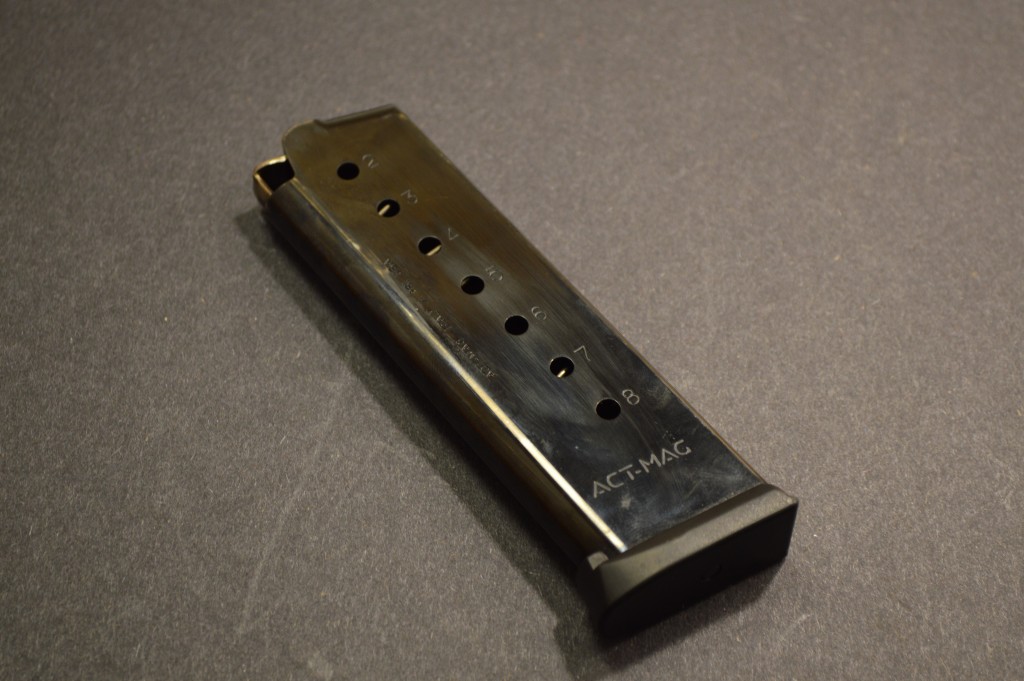
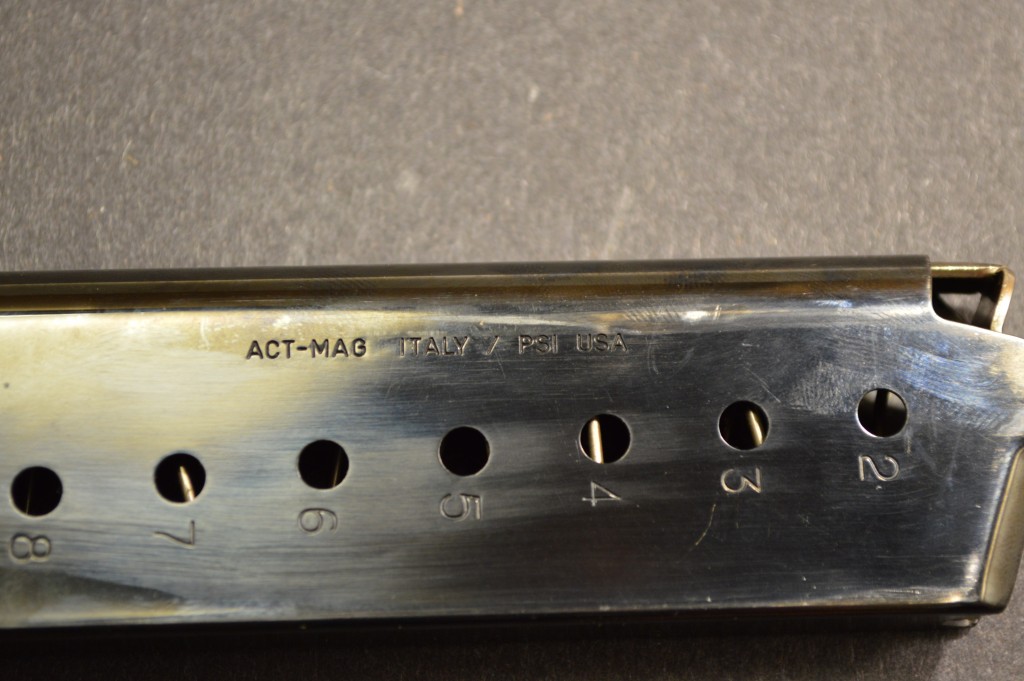
Unfortunately, I experienced several failures to feed on the last round while testing at the range. In contrast to the followers found in magazines for most handguns, the ACT magazine utilizes a follower that dips downward near the front. While an indentation or dip is necessary to engage the slide stop on the last round, the magazine’s failure to support this eighth slug often leads to failures, even when using FMJ ball ammunition. In order to ensure absolute reliability, users should purchase an upgraded follower that will more adequately support the final round. In more positive news, the magazines drop freely when the left-side release button is pressed.
Sights
I am not sure there is much to say in this section. The sights on the FX 1911 are somewhere between adequate and awful. While they truly are more usable than what some would have you believe, they are far from precise and are clearly geared for close range defensive use, rather than match shooting. That said, I doubt many will be using this pistol for competition. To summarize, the FX 1911 features sights that are faithful reproductions of those seen on government-issue 1911s. Shooters who are looking at this pistol with the intent to upgrade the sights should be warned – Novak and Bomar style sights will require milling the slide to fit.
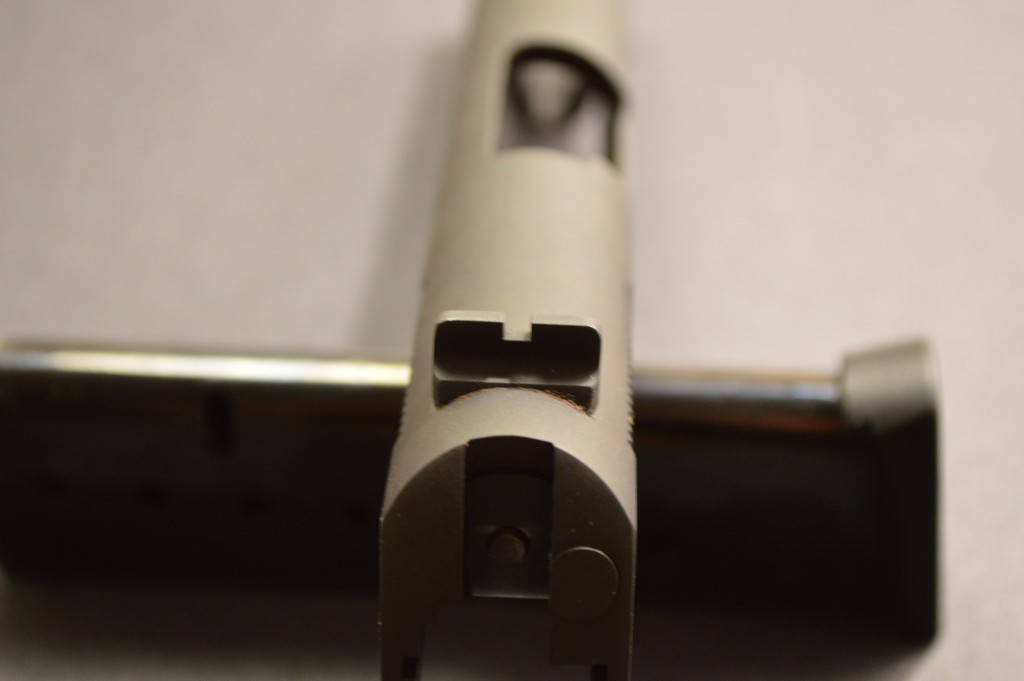

Range Report
The first thing I noticed when shooting my FX 1911 for the first time – alongside my Beretta M9 and H&K USP – is that the recoil is substantially heavier with the .45 ACP than it is with the 9mm. If the 9mm is like throwing baseballs, the .45 is like heaving softballs at the target. While not unbearable, there is a noticeable difference. The .45 feels more like a heavy rolling push in the hands when fired, whereas the 9mm is snappier and quicker back on target. Both are still more pleasant than most .40 S&W pistols I have fired. The remarkable heft of the 1911 also helps to tame the venerable 230-grain round that explodes out of the barrel with each pull of the trigger. With entirely steel construction, 1911s tend to be much heavier than popular aluminum alloy and polymer framed guns.
The trigger on the FX 1911 is surprisingly good. As a single action gun, the 1911 trigger features only one pull weight and distance for shooters to learn. I would place my example at around 4.5 to 5 pounds of resistance with a miniscule 1mm of takeup before the hammer falls. Reset is also tiny at around 1mm. Overall, the trigger makes for a very repeatable shooter, even if the sights are not the fastest or most precise. I was able to maintain around 2-inch groups at 7 yards from the standing position with the FX 1911, but I am far from an expert handgunner.
On the whole, the FX was very reliable during my testing. The only issues I experienced were magazine related and should be easily rectified. I did notice that the slide-to-frame fit seemed to loosen up some (very, very slightly) after my initial range session. This seems to be in line with standard, government spec 1911s and will probably make for a more reliable firearm than one that is excessively tight.
Conclusion
The ATI FX 1911 is unquestionably an entry-level handgun. Shooters looking to add upgraded sights, safeties, and triggers are likely to find that other 1911s make better starting points. For those of us who only seek a solid 1911 for the range and even self defense, the FX will fit the bill admirably, even if higher capacity and lighter options exist in .45 ACP.
As far as affordable 1911s go, the ATI FX Military most closely replicates the look and feel of the classic 1911A1 and would be an excellent option for curious shooters who respect its heritage or seasoned collectors who are looking to spare their collectible 1911s from unnecessary wear. Even in spite of my frustration with ATI’s rebate process (for some unknown reason they ask for a partial copy of the dealer’s Form 4473), I will not hesitate to recommend the FX 1911 Military to anyone looking for a faithful recreation of John Browning’s classic.
An information security professional by day and gun blogger by night, Nathan started his firearms journey at 16 years old as a collector of C&R rifles. These days, you’re likely to find him shooting something a bit more modern – and usually equipped with a suppressor – but his passion for firearms with military heritage has never waned. Over the last five years, Nathan has written about a variety of firearms topics, including Second Amendment politics and gun and gear reviews. When he isn’t shooting or writing, Nathan nerds out over computers, 3D printing, and Star Wars.

